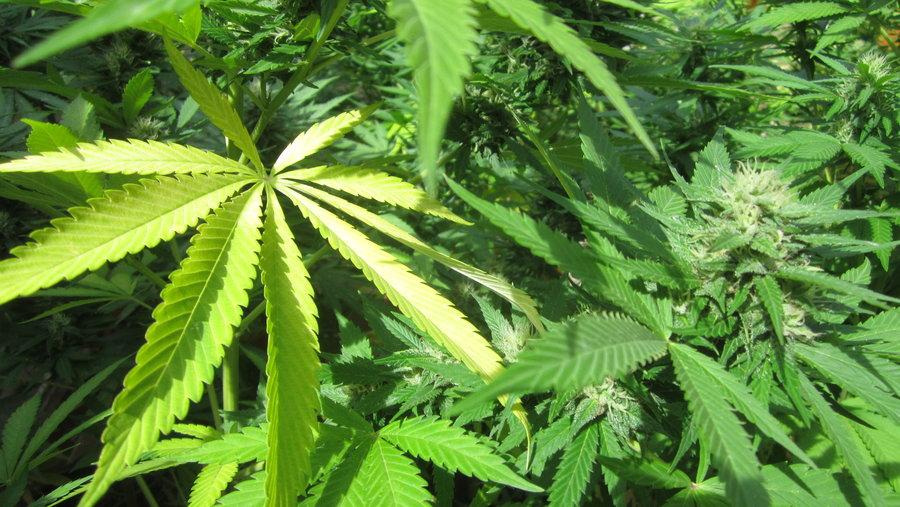Over-baked: The lasting effects of marijuana usage on teens
February 4, 2017
Marijuana. Weed. Pot. Cannabis. Ganga. Hemp. Grass. Herb. Blunt. Dope. Joint. Broccoli.
These are common street names for the illegal substance that travels throughout schools in backpacks, or sits tucked away in lockers until the school bell rings, signalling that it is time to get baked.
Although this is an all natural and seemingly harmless drug in the minds of many teens, the lasting effects it has on the human brain could leave them burnt.
The human brain is not fully mature until roughly the age of 25, according to Christian Thurstone, M.D., Assistant Professor of Psychiatry at the University of Colorado, Denver.
This evidence shows that adolescent brains are still developing well into their adult years and exposure to marijuana puts them in a vulnerable place to abuse, to become addicted and to eventually grow a dependency for the drug.
The beginning of this process can start with curiosity according to Stockbridge Chief of Police, Johnnie Torres.
“I believe three of the main contributing factors are: curiosity, cultural acceptance (media) forming a low perception of harm and they view marijuana as a medicine have easy access including from other parents who use medically.” Torres said. ¨This is true in every community; not just Stockbridge.¨
Perception of risk has lowered, causing students to overlook the possible outcomes of abusing this substance, increasing the amount of users.
Many blame the pressures of life.
“I think teens start smoking because high school is a very stressful time, especially in the junior and senior year, when they have to make big tough life decisions,” junior Zane Turner said.
The National Institute on Drug Abuse found that 34.9 percent of 12th graders have reported using marijuana/hashish in the past year. They also report that every day 3,287 teens use marijuana for the first time.
If that is the case, that would mean there are 122 seniors who will be graduating in the spring and out of those students, approximately 29 are estimated to have smoked marijuana in the past year and that number is continually growing.
¨I feel like because of how in the media they talk about how it’s like a safe alternative, and it’s just plants and everything, people are thinking it’s a safe way to get away from all of their problems and stress. People see a lot of the good things about it but very seldom the bad,” sophomore Alexia Tanner said. ¨Like when we we’re in a few grades before in our health class, we watched a few videos about drugs, and for marijuana, they really just talked about how it was used for medicine, so we really weren’t taught the risks, so I think if that was more apparent that could be useful for ending anything that could be dangerous.¨
The National Institute on Drug Abuse (NIDA) has recorded that regular heavy marijuana use by teens can lead to an IQ drop of up to eight points. Not only that, but heavy marijuana use is also linked to lower grades and test scores and a lower chance of graduating from high school or enrolling into college.
“Long-term, regular users who started smoking the drug before the age of 18 often cause changes in their brain’s structure and functioning that result in permanent cognitive deficits,” Thurstone said in a published report by the Student Engagement Unit of the Colorado Department of Education.¨Essentially, they can create for themselves a level of ‘normal’ performance that is lower functioning than the level of normal performance they may have achieved had they not used marijuana.”
Smoking marijuana may be considered safe but when going into psychosis it could be too late to think otherwise.
According to the U.S. National Library of Medicine National Institutes of Health, cannabis use has been reported to induce long-lasting psychotic disorders and a dose-response relationship has been observed.
During a period of psychosis, also known as psychotic disorder, a person’s thoughts and perceptions are disturbed and the individual may have difficulty understanding what is real and what is not, according to the National Institute of Mental Health.
¨I don’t think it’s safe by any means, because obviously it causes certain problems over time; however, I don’t think it is any less safe than other drugs like alcohol,” senior Jordan Hammerberg said.
Marijuana usage has also been linked to growth stunts and for puberty to begin at a younger age.
According to an experiment conducted by the European Society of Endocrinology, when 220 non-smoking and 217 marijuana-addicted boys were involved in an experiment to study hormone levels that affect puberty and growth, smokers had an increase in puberty related hormones such as testosterone and luteinising, but a decrease in growth hormones. It was also found that non-smoking boys were on average 8.8 lbs heavier and 4.6 inches taller by the age of 20 than the marijuana smokers.
This study showed that not only is physical growth affected, but also the mental growth of the body.
NIDA has found that heavy marijuana users have lower satisfaction with life, are more likely to earn a lower income and are more likely to be unemployed.
Marijuana usage beginning in adolescents affects both the mental and physical outcome of teenage lives.
“Mentally, it’s proven if you use it and you abuse, it kills your brain cells and makes you turn stupid. Also, you know people drug test to get the job that you want or the school that you might want to get into,” senior Jake Chapman said. “Even though there are arguments that it should be legal, it’s not right now so you have to be conscious of that if you are wanting certain things in life, you are going to have to know that you can’t always do what you want.”

